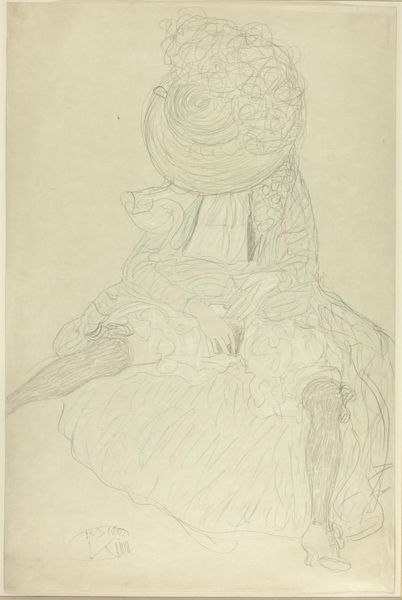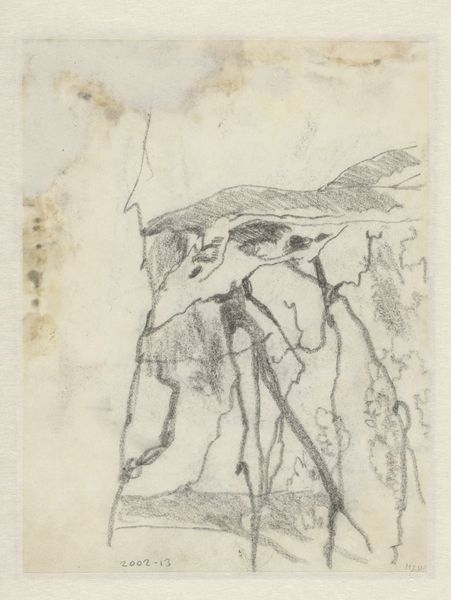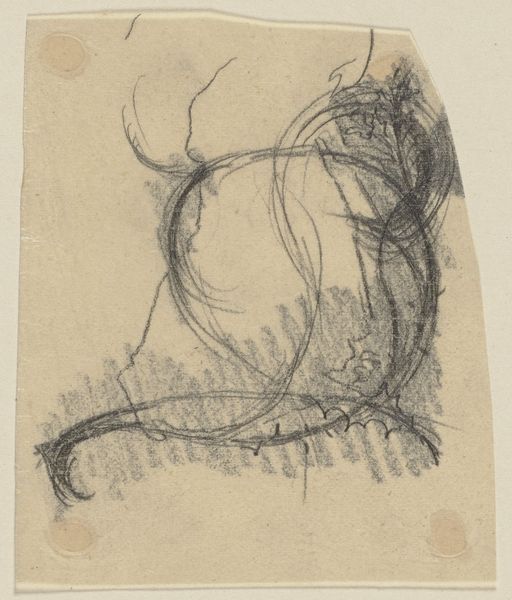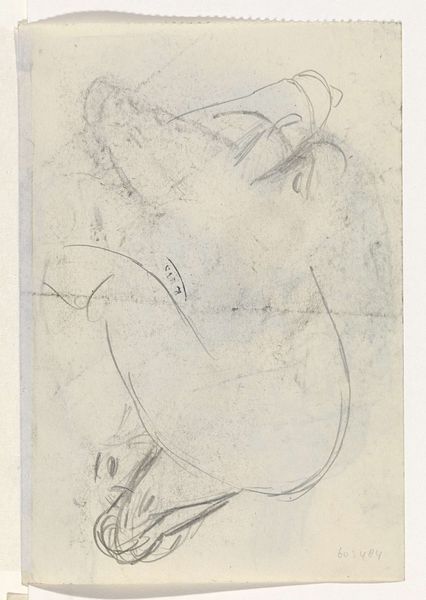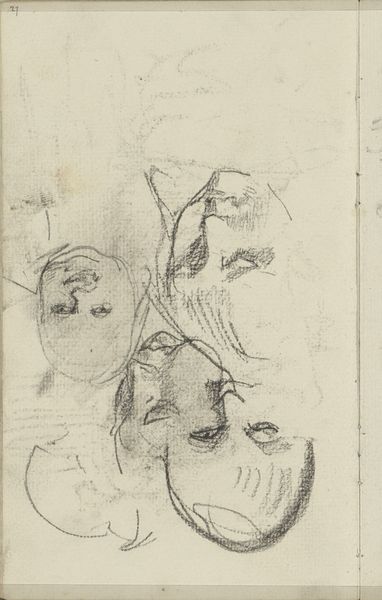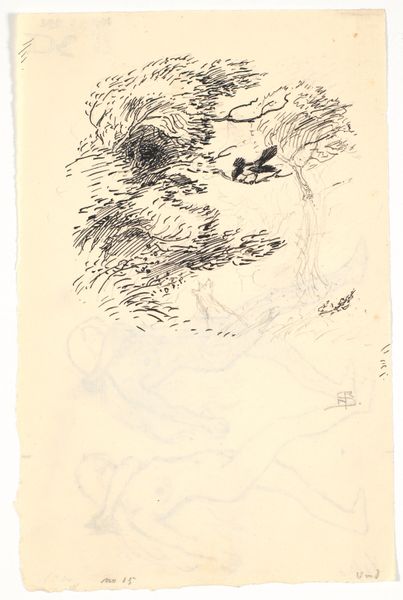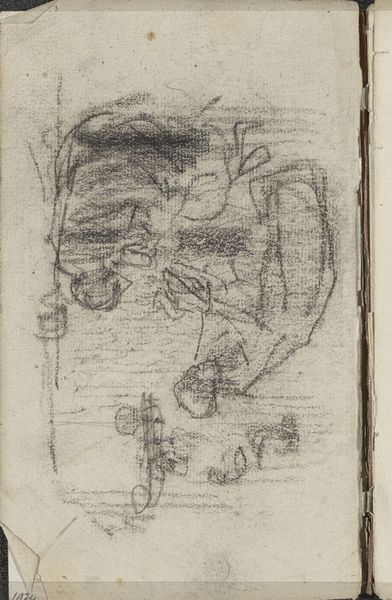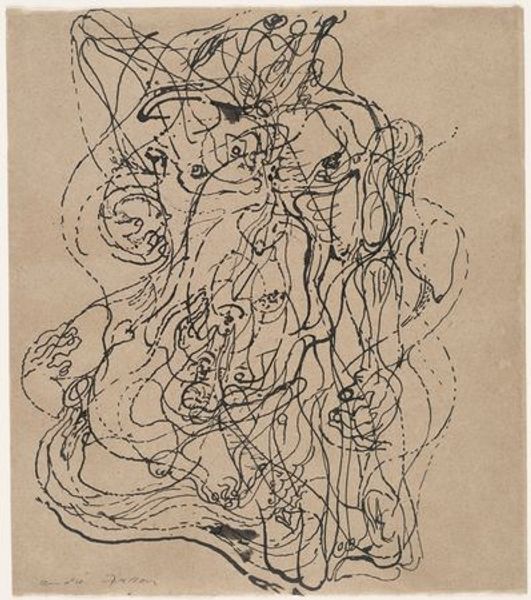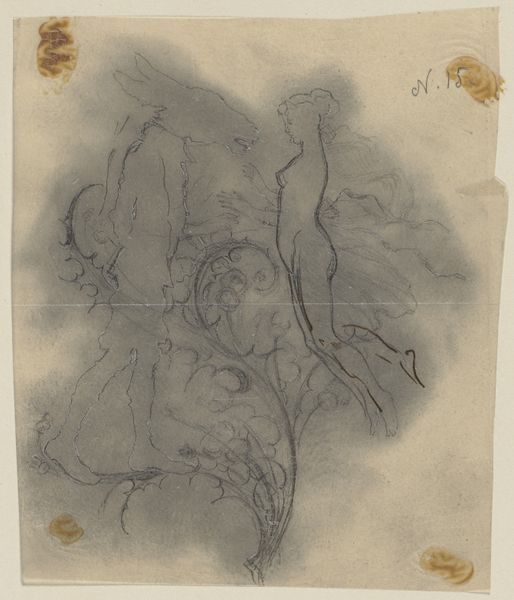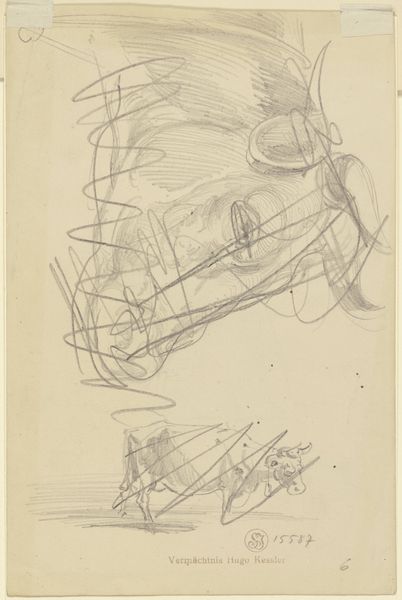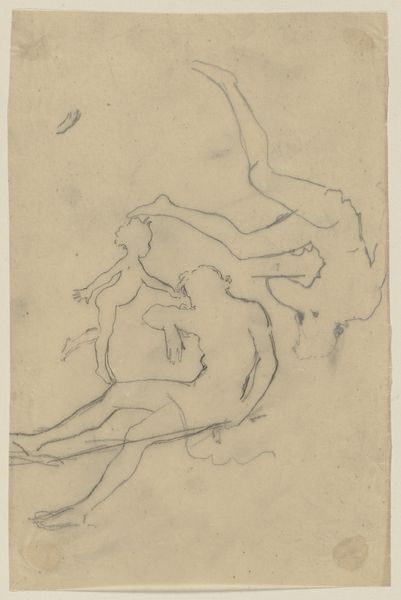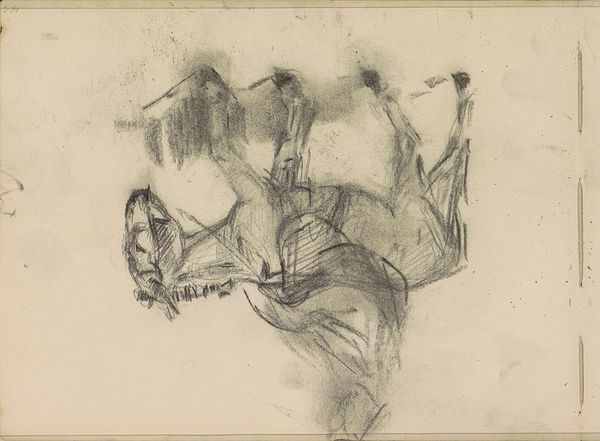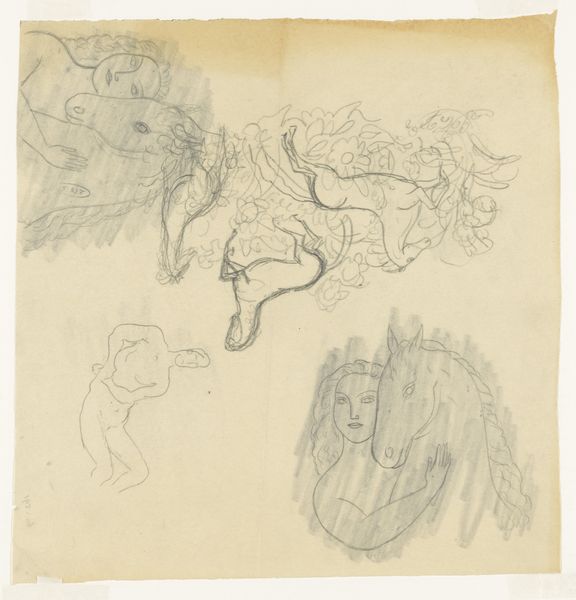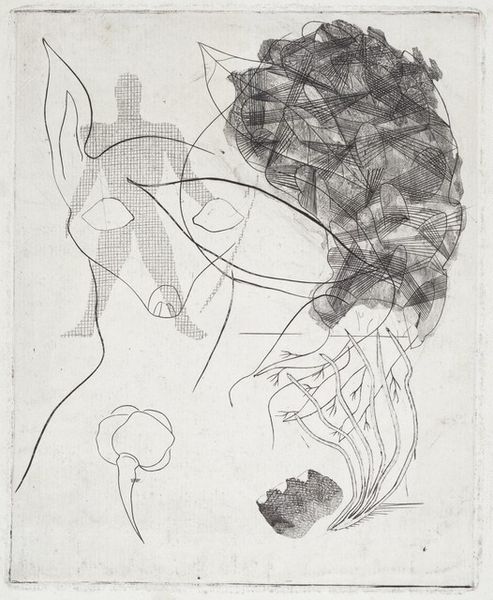
drawing, ink
#
portrait
#
drawing
#
ink
#
art-informel
#
abstraction
#
line
Copyright: Public Domain
This is Wols' *Injured Head*, an ink and watercolor drawing currently residing at the Städel Museum. Wols, who was German, made this piece sometime during or after the Second World War, a period defined by a profound sense of existential crisis and the collapse of traditional values. In this historical context, Wols' work, though abstract, deeply resonates with the trauma and psychological fragmentation of post-war Europe. The injured head, rendered with frantic lines, evokes pain, suffering, and the dehumanization experienced by so many. The grotesque, almost monstrous, form of the head can be seen as a metaphor for the damage inflicted on the collective psyche, questioning traditional representations of the human form. What emotions does this piece elicit in you? Does it resonate with feelings of pain, loss, or alienation? Wols’ *Injured Head* is a testament to art’s capacity to reflect and confront the darkest aspects of the human experience, reminding us of the importance of acknowledging and understanding our shared history.
Comments
stadelmuseum about 2 years ago
⋮
This is a curious thing the artist Wols has rendered on paper with meticulous care and a sense of poetry. What at first sight seems to be the detailed and faithful reproduction of an organically structured found object actually bears a greater resemblance to a hallucinatory excrescence attributable solely to the artist's imagination. On a merely palm-sized sheet of paper, this biomorphous shape is described with fine lines drawn in Indian ink. Viewed at close quarters, they form an interwoven web of tissue, which in detail looks like a microcosm marked by the process of decay caused by ageing. Various irregularly closed openings and cracks resemble long-healed injuries to a rubbery clump of tissue, whose exterior is marked by a multiply structured network of lines. Around a darkened, crater-like hollow we can make out a collection of tiny bubbles, which suggest life. An occasional bubble can also be seen floating in indeterminate nothingness around the outline of this object. Here, we can also see some of the countless little hairs, like weightless threads in motion, which underscore the coherence of the shape, whose outer form is delineated by an enclosing contour. The artist used watercolours to give the paper a slightly red tinge, lending his strange organism a fluorescent life of its own through a delicate blue, yellow, green and red.Wols created this drawing during his sojourn in Dieulefit, near Montélimar, in the South of France, having fled there from the German occupying forces at the end of 1942. He would live there in impoverished circumstances until 1945. Wols was born Alfred Otto Wolfgang Schulze in Berlin in 1913. Artistically talented and nature-loving, he moved to Paris in 1932 and initially tried to make a living as a photographer. He adopted the pseudonym Wols in 1937. His drawings from the late 1930s - pen-and-ink works with watercolours added to provide colour - were influenced by Surrealism. In the early 1940s, his drawings switched from fantasy-based figural scenes and paradox worlds to a precise, non-representational language of forms that nonetheless remained tangibly linked to his experience of nature.Wols' Tachist paintings, which proved very important for the development of European painting in post-war art, were not produced until after 1946, in the last years of his short life. His works were given titles posthumously as the artist himself had largely avoided them.
Join the conversation
Join millions of artists and users on Artera today and experience the ultimate creative platform.
